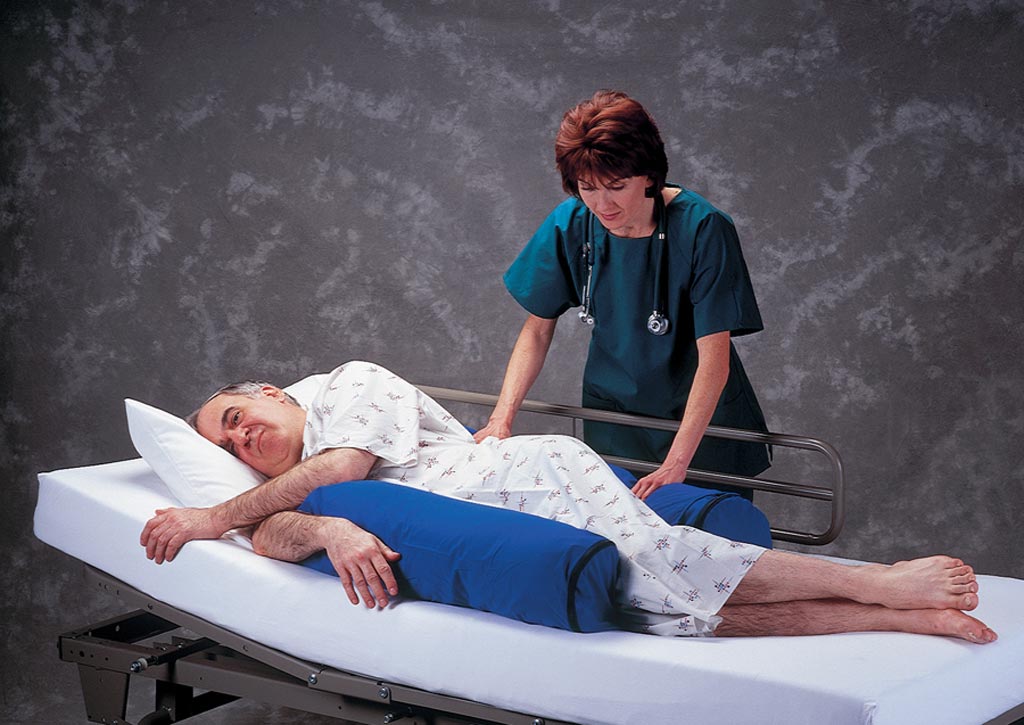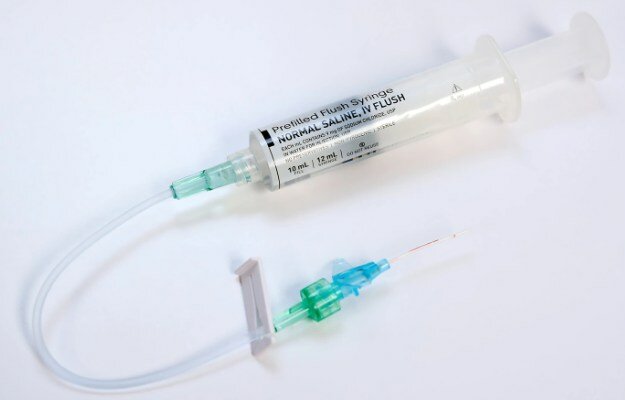Patient Positioning Systems Market to Reach USD 1.4 Billion by 2025
|
By HospiMedica International staff writers Posted on 29 Jan 2018 |

Image: The global patient positioning systems market is expected to reach USD 1.4 billion by 2025 (Photo courtesy of Medgadget).
The global patient positioning systems market was valued at USD 942.8 million in 2016 and is expected to grow at a CAGR of 4.7% during the 2014 - 2025 forecast period to reach USD 1.4 billion by 2025, driven by a growing geriatric population, rising incidence of cancer, increasing awareness among patients, and surge in expenditure on diagnostic procedures. Additionally, technological advancements in sensors, such as optic fiber technology, cancer tracking sensors, and MEMS sensors, are expected to further boost the market growth.
These are the latest findings of Grand View Research, Inc. (San Francisco, CA, USA), a market research and consulting company.
Based on product, the tables segment dominates the market with the largest share due to higher demand and increase in the number of hospitals, ambulatory centers, and other settings, such as specialty centers and diagnostics centers. The growing demand for efficient and accurate diagnostic imaging is creating growth opportunities for the tables segment and will help it to retain its lead during the forecast period. However, the accessories segment is projected to record the highest growth over the forecast period, led by the increasing number of patients undergoing different types of surgeries and diagnoses. Higher demand for diagnosis in the developing countries, such as India and China, is likely to drive sales of patient positioning systems in the coming years.
Based on application, the surgery segment holds the largest market share due to the increasing prevalence of chronic diseases, such as cancer. The increase in global healthcare expenditure is expected to further fuel the growth of the surgery application segment over the forecast period. However, the diagnostics segment is projected to record the highest growth over the forecast period, due to increasing expenditure on diagnostics/imaging, worldwide.
Based on end use, the hospitals segment accounts for the largest market share due to increasing healthcare expenditure, globally. The increasing number of hospitals across the world is expected to drive the demand for patient positioning systems in this end use segment. However, the ambulatory centers segment is projected to grow at a faster rate during the forecast period, driven by the increasing number of such centers in the developed as well as developing countries.
Based on region, North America dominated the global patient positioning systems market in 2016 with the largest share of 34.2%, due to the increasing prevalence of chronic and lifestyle-related diseases, advanced healthcare infrastructure and local presence of major market players in the region. Europe is also expected to hold a high market share during the forecast period due to the flourishing medical device industry in the UK, France, and Germany, as well as increasing growth opportunities for the market players in the region. However, Asia Pacific is expected to record the highest growth over the forecast period, due to the rising geriatric population and increasing healthcare expenditure in the region.
The major players in the global patient positioning systems market are focusing mainly on growth strategies, such as collaborations, mergers and acquisitions, and approvals to enhance their position and client base.
Related Links:
Grand View Research
These are the latest findings of Grand View Research, Inc. (San Francisco, CA, USA), a market research and consulting company.
Based on product, the tables segment dominates the market with the largest share due to higher demand and increase in the number of hospitals, ambulatory centers, and other settings, such as specialty centers and diagnostics centers. The growing demand for efficient and accurate diagnostic imaging is creating growth opportunities for the tables segment and will help it to retain its lead during the forecast period. However, the accessories segment is projected to record the highest growth over the forecast period, led by the increasing number of patients undergoing different types of surgeries and diagnoses. Higher demand for diagnosis in the developing countries, such as India and China, is likely to drive sales of patient positioning systems in the coming years.
Based on application, the surgery segment holds the largest market share due to the increasing prevalence of chronic diseases, such as cancer. The increase in global healthcare expenditure is expected to further fuel the growth of the surgery application segment over the forecast period. However, the diagnostics segment is projected to record the highest growth over the forecast period, due to increasing expenditure on diagnostics/imaging, worldwide.
Based on end use, the hospitals segment accounts for the largest market share due to increasing healthcare expenditure, globally. The increasing number of hospitals across the world is expected to drive the demand for patient positioning systems in this end use segment. However, the ambulatory centers segment is projected to grow at a faster rate during the forecast period, driven by the increasing number of such centers in the developed as well as developing countries.
Based on region, North America dominated the global patient positioning systems market in 2016 with the largest share of 34.2%, due to the increasing prevalence of chronic and lifestyle-related diseases, advanced healthcare infrastructure and local presence of major market players in the region. Europe is also expected to hold a high market share during the forecast period due to the flourishing medical device industry in the UK, France, and Germany, as well as increasing growth opportunities for the market players in the region. However, Asia Pacific is expected to record the highest growth over the forecast period, due to the rising geriatric population and increasing healthcare expenditure in the region.
The major players in the global patient positioning systems market are focusing mainly on growth strategies, such as collaborations, mergers and acquisitions, and approvals to enhance their position and client base.
Related Links:
Grand View Research
Latest Business News
- Philips and Masimo Partner to Advance Patient Monitoring Measurement Technologies
- B. Braun Acquires Digital Microsurgery Company True Digital Surgery
- CMEF 2025 to Promote Holistic and High-Quality Development of Medical and Health Industry
- Bayer and Broad Institute Extend Research Collaboration to Develop New Cardiovascular Therapies
- Medtronic Partners with Corsano to Expand Acute Care & Monitoring Portfolio in Europe
- Expanded Collaboration to Transform OR Technology Through AI and Automation
- Becton Dickinson to Spin Out Biosciences and Diagnostic Solutions Business
- Boston Scientific Acquires Medical Device Company SoniVie
- 2026 World Hospital Congress to be Held in Seoul
- Teleflex to Acquire BIOTRONIK’s Vascular Intervention Business
- Philips and Mass General Brigham Collaborate on Improving Patient Care with Live AI-Powered Insights
- Arab Health 2025 Celebrates Landmark 50th Edition
- Boston Scientific Acquires Medical Device Company Intera Oncology
- MEDICA 2024 to Highlight Hot Topics of MedTech Industry
- Start-Ups To Once Again Play Starring Role at MEDICA 2024
- Boston Scientific to Acquire AFib Ablation Company Cortex
Channels
Critical Care
view channel
CPR Guidelines Updated for Pediatric and Neonatal Emergency Care and Resuscitation
Cardiac arrest in infants and children remains a leading cause of pediatric emergencies, with more than 7,000 out-of-hospital and 20,000 in-hospital cardiac arrests occurring annually in the United States.... Read more
Ingestible Capsule Monitors Intestinal Inflammation
Acute mesenteric ischemia—a life-threatening condition caused by blocked blood flow to the intestines—remains difficult to diagnose early because its symptoms often mimic common digestive problems.... Read more
Wireless Implantable Sensor Enables Continuous Endoleak Monitoring
Endovascular aneurysm repair (EVAR) is a life-saving, minimally invasive treatment for abdominal aortic aneurysms—balloon-like bulges in the aorta that can rupture with fatal consequences.... Read more
Wearable Patch for Early Skin Cancer Detection to Reduce Unnecessary Biopsies
Skin cancer remains one of the most dangerous and common cancers worldwide, with early detection crucial for improving survival rates. Traditional diagnostic methods—visual inspections, imaging, and biopsies—can... Read moreSurgical Techniques
view channel
Robotic Assistant Delivers Ultra-Precision Injections with Rapid Setup Times
Age-related macular degeneration (AMD) is a leading cause of blindness worldwide, affecting nearly 200 million people, a figure expected to rise to 280 million by 2040. Current treatment involves doctors... Read more
Minimally Invasive Endoscopic Surgery Improves Severe Stroke Outcomes
Intracerebral hemorrhage, a type of stroke caused by bleeding deep within the brain, remains one of the most challenging neurological emergencies to treat. Accounting for about 15% of all strokes, it carries... Read morePatient Care
view channel
Revolutionary Automatic IV-Line Flushing Device to Enhance Infusion Care
More than 80% of in-hospital patients receive intravenous (IV) therapy. Every dose of IV medicine delivered in a small volume (<250 mL) infusion bag should be followed by subsequent flushing to ensure... Read more
VR Training Tool Combats Contamination of Portable Medical Equipment
Healthcare-associated infections (HAIs) impact one in every 31 patients, cause nearly 100,000 deaths each year, and cost USD 28.4 billion in direct medical expenses. Notably, up to 75% of these infections... Read more
Portable Biosensor Platform to Reduce Hospital-Acquired Infections
Approximately 4 million patients in the European Union acquire healthcare-associated infections (HAIs) or nosocomial infections each year, with around 37,000 deaths directly resulting from these infections,... Read moreFirst-Of-Its-Kind Portable Germicidal Light Technology Disinfects High-Touch Clinical Surfaces in Seconds
Reducing healthcare-acquired infections (HAIs) remains a pressing issue within global healthcare systems. In the United States alone, 1.7 million patients contract HAIs annually, leading to approximately... Read moreHealth IT
view channel














